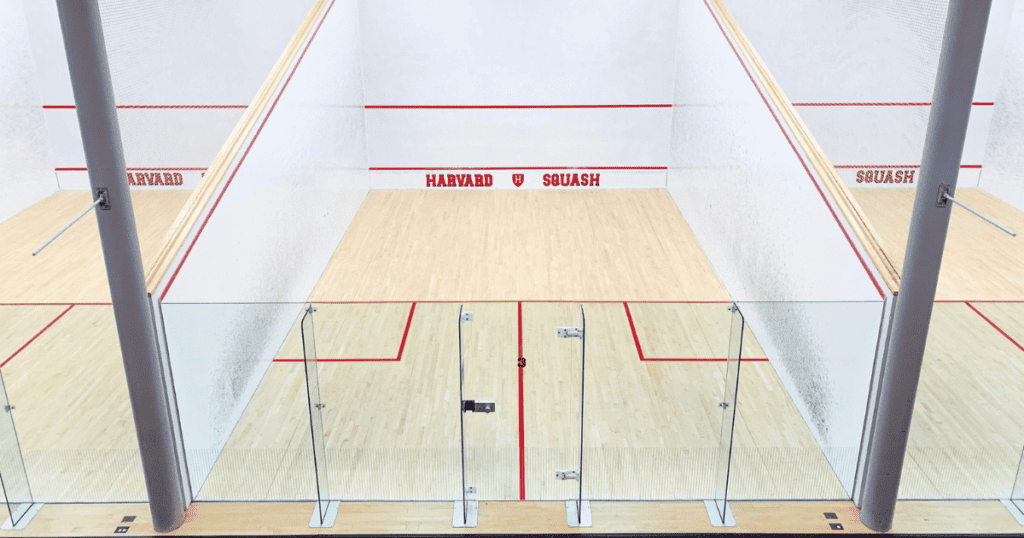The Epicenter of a High-Energy Sport
The squash court is a four-walled arena where players pit their wits, skills, and endurance against each other. In essence, it’s a rectangular playing surface, typically enclosed by four walls, where the game of squash comes alive. But what makes this court special, and how does it elevate the experience of this fast-paced racket sport? Let’s delve deeper.
Design and Dimensions
Standard squash courts measure 32 feet (9,75meters) in length and 21 feet (6,40meters) in width. The front wall, the primary target for players, has three parallel lines. The bottom line, known as the tin, is the lowest point a ball can be hit, while the outline at the top marks the ball’s maximum height. The service line, positioned between these two, is where players must strike the ball when serving.
The uniqueness of a squash court lies in its walls. The ball can be played off any wall, but understanding the dynamics of each wall is crucial for strategy.

The Game on the Court
Imagine standing in the middle of this court. You’re armed with a racket, and so is your opponent on the other side. The objective? Hit the ball onto the front wall without letting it bounce twice. But here’s where the fun starts: the ball can ricochet off any wall, creating an unpredictable and strategic game where players must anticipate, move quickly, and strike with precision.
For newcomers, the squash court might seem confining. But seasoned players know that its dimensions offer a world of possibilities. You could play a straight drive, keeping the ball close to the side walls, or send your opponent scrambling with a cross-court shot.
A Place of Strategy and Skill
The squash court isn’t just about power; it’s a chessboard of strategy. Consider the boast shot, where players hit the ball onto the side walls before it reaches the front. Or the drop shot, played delicately to fall softly at the front, drawing players forward.
The court’s design plays a pivotal role in these strategies. The glass back wall in many modern courts adds another layer of complexity, allowing players to play shots that bounce back into play from behind.
When to Use Squash Court
The term “squash court” is integral to discussions about the game. Players might say, “I’ve booked the squash court for 5 PM,” or coaches might advise, “Practice your serves on the squash court daily.” For enthusiasts discussing venues, you might hear, “The new sports complex boasts four state-of-the-art squash courts.”
In essence, whenever you’re referring to the specific area where squash is played, “squash court” is your go-to term.
In Summary
The squash court is more than just an enclosed space. It’s where the magic of the game unfolds, where skills are honed, strategies tested, and champions made. Its walls have echoed with the sounds of epic battles, last-minute victories, and the sheer joy of playing a sport that demands as much from the mind as it does from the body.
Whether you’re a player, an enthusiast, or someone curious about the game, the squash court stands as a testament to the rich history and dynamic nature of squash. It’s a world within a world, promising endless hours of thrill, excitement, and passion. So, the next time you hear the thud of a ball on a front wall or the cheer of a crowd witnessing a masterful rally, know that you’re near the beating heart of squash: the court.